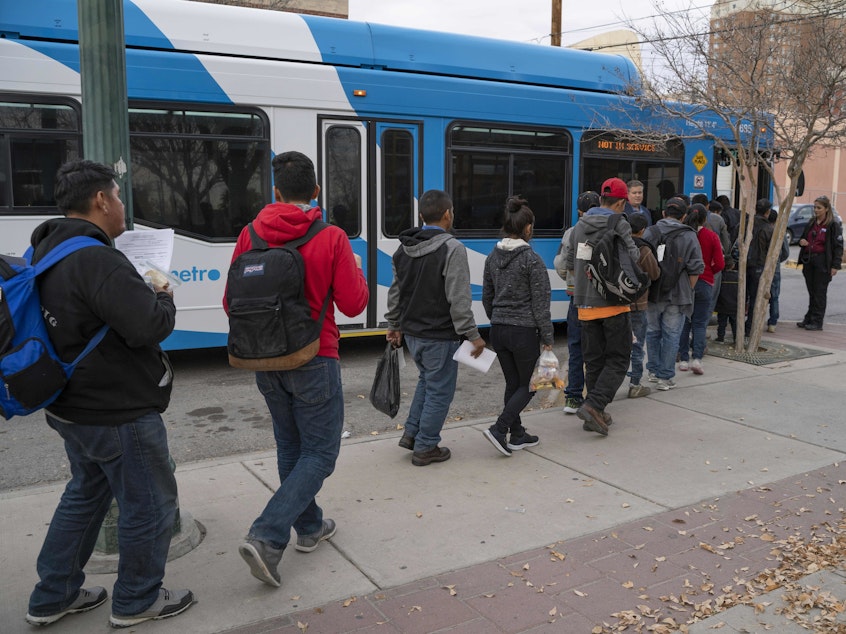'Irrational on so many levels.' What Trump's sanctuary city idea could mean for Seattle

Trump's latest immigration policy proposes shipping migrants from the U.S.- Mexico border and releasing them in sanctuary cities across the country.
On Friday morning, President Donald Trump issued a dare to so-called "sanctuary cities" from his Twitter account:
"Due to the fact that Democrats are unwilling to change our very dangerous immigration laws," he wrote, "we are indeed, as reported giving strong considerations to placing Illegal Immigrants in Sanctuary Cities only..."
But despite the president's warning, it's unlikely that this proposal will impact Seattle.
The tweet came after the Washington Post reported that White House and immigration officials rejected the plan twice -- once in November last fall and again in February this year.
Sponsored
“He’s talking about using government resources in order to punish those regions that have not supported his political agenda,” says Matt Adams, legal director of the Northwest Immigrant Rights Project in Seattle.
“But even setting aside whether its unlawful, it’s irrational on so many different levels," he added.
An official from the U.S. Department of Homeland Security declined to comment on whether the agency would be implementing Trump’s proposal.
Adams points out that even if the policy was implemented, it would be incredibly expensive to transport migrants from the southern border all the way to sanctuary cities — some as far away as Burlington, Vermont.
While Trump has re-allocated money to fund his proposed immigration policies before, this one doesn’t account for other realities: Many sanctuary cities are already home to immigrant communities.
Sponsored
One in five King County residents was born outside of the U.S. according to the Office of Immigrant and Refugee Affairs.
Adams scoffed at the president's idea.
“It’s completely misguided to think that’s some type of punishment,” Adams said. “The immigrant community is an integral part of our community.”
And it's not like immigrants can't move if they are actually relocated to new cities. Detained immigrants often move after they’re released from custody, for example. When immigrants from the Northwest Detention Center are let go, they travel to reconnect with family or find similar community ties as the ones they left behind.
Adams stresses it’s important to analyze bigger trends in immigration policy, rather than the latest tweet.
Sponsored
“I think the point of his tweets is to shift the focus," Adams said. "Over the past week, the president has suffered two significant defeats in the courts that affected the immigration system on a nationwide level."
One case was based in Seattle. It ruled asylum seekers be given prompt bond hearings and made another significant change to the way their cases are handled: Before, asylum seekers had to present evidence as to why they ought to be released, but now, the burden of proof has shifted to the government. Government lawyers must now explain why an asylum seeker should remain detained.
The other suit overturned a policy that forced Central American asylum seekers to wait in Mexico while their cases are pending.
Those setbacks also came during a chaotic week for government leadership, like Kirstjen Nielsen’s sudden resignation from the Department of Homeland Security and Ronald Vitiello’s rescinded nomination for director of Immigration and Customs Enforcement.




